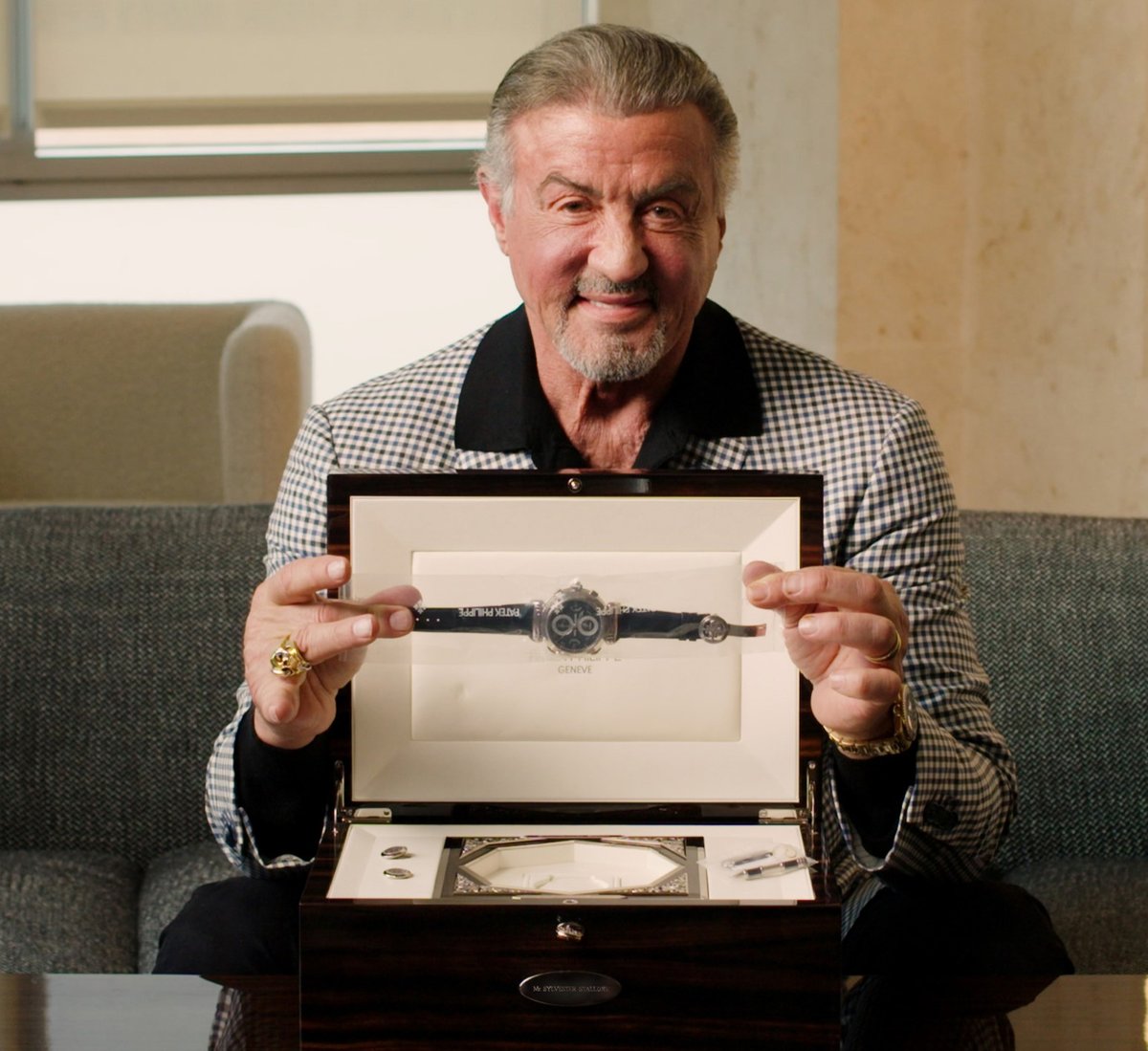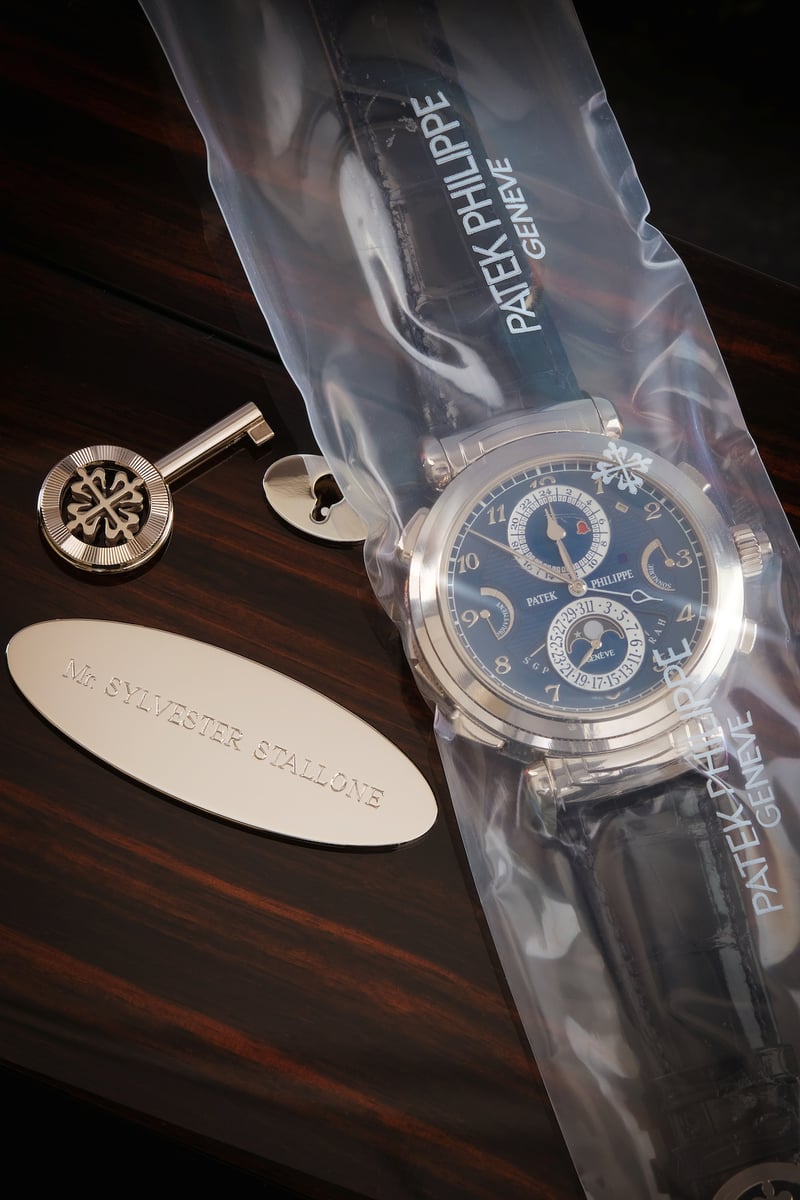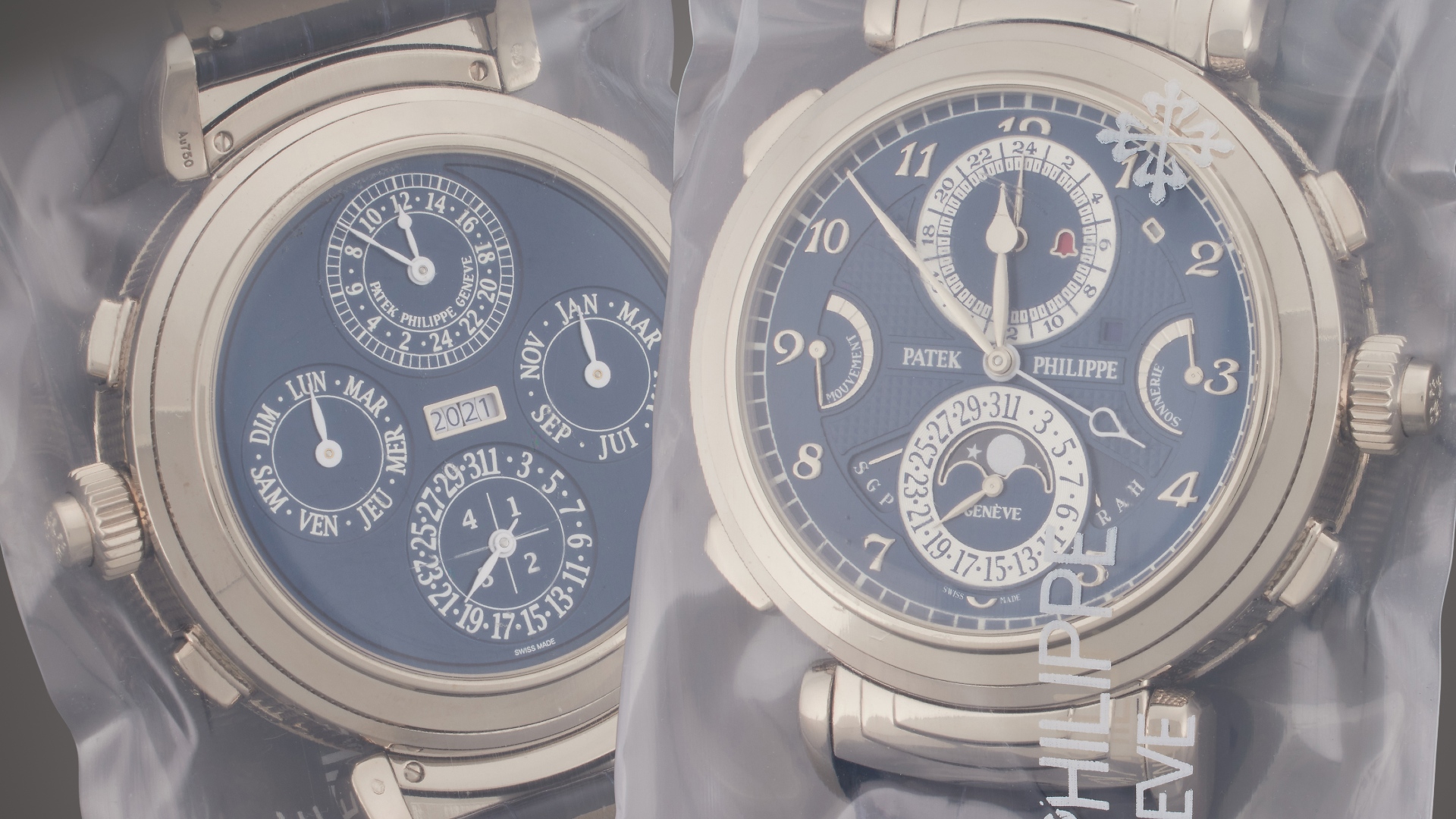Editor’s Note: This story originally appeared in Volume II of B.H. Magazine. For access to future issues, subscribe here.
Earlier this year, Sotheby’s announced they were auctioning off 11 watches owned by Sylvester Stallone. In addition to having starred in iconic films such as Spy Kids 3-D: Game Over, Stallone is a pretty big deal when it comes to watch collectors – he’s the guy who put Panerai on the map, after all.
While Sly was shifting a few Panerais, it was the sale of his Patek Philippe Grandmaster Chime ref. 6300G that ruffled some feathers.
It’s unlikely Patek Philippe makes more than one or two of these phenomenally rare watches a year – packed with 20 complications, and a price tag above three million dollars. What made it controversial is that Stallone’s example was unworn, still tucked safely away in factory plastic to preserve its mint condition.

RELATED: I Love Watches, But I Love The Time Spend Without Them More
The watch hammered in for a cool US$5.4 million, managing to irritate company president Thierry Stern enough that he commented about it on the record. In an interview with industry title WatchPro, Stern said, “Of course we do not like it, but it can happen. I cannot control everybody. It is not fair for a client that may have been waiting for this piece for many years and then sees it being sold.”
Surprisingly, the drama around Stallone flipping his BNIB Patek and almost doubling his cash is relatable for anyone with an interest in watches in 2024.
It’s easy to paint Stallone’s sale as a simple cash grab, a symptom of the increasingly pervasive “watches as an investment” mentality that’s skyrocketed since Covid. But it’s not the only explanation. What if Stallone woke up one morning and, after a light gym session, looked at his crowded watch box and decided to slim it down?
“The real villain is the watches-as-an-investment trope.”
People sell watches for all sorts of reasons – and it’s weird that the guys who made and sold the watch are getting stressed by it. Especially as, a lot of the time, people who are into watches sell watches to buy more watches. Certainly, it’s what I, a humble freelancer do to justify what is, at the end of the day, a pretty expensive hobby.
It’s hard to imagine anyone getting upset in this sort of scenario. Watches are bought and sold, and everyone wins. Except, of course, as Stallone and Stern demonstrate, it isn’t as simple as you’d think. As any newcomer to Rolex would know.
Say, in 2019, I wanted to buy a Rolex. I would have been told to put my name down, and eventually, I would have got a call from my friendly dealer; they’ve got a watch for me – it’s not exactly what I wanted, but it’s close. I agree to buy it because I never know if I’ll get another chance. Plus, it gives me a bit of cred with the retailer, which (fingers crossed) will help me with future purchases. It also helps that the sales guy told me a Rolex makes for a great investment.

I take my new watch home and make the obligatory IG post and feel good as the likes roll in. But as time ticks on, I can’t ignore the fact that this isn’t the watch for me. Maybe it’s because it’s not the exact watch I wanted, or maybe it’s because my tastes have changed since I put my name down for it years ago. Whatever the reason, it’s not sparking joy. I’m not wearing it, and it’s time for it to go. This is where it gets tricky.
Thanks to the narrative of “watches as an investment” that everyone – authorised dealers included – has been using to sell watches for the last five years, there’s an issue with people flipping their watches for profit. This irritates everyone, from loyal customers who have to eat a huge premium to get the watch they want, all the way up to the brands, who have to deal with frustrated customers constantly asking for that one hot watch.
RELATED: Expensive Watches Aren’t An Asset Class, Warns Rolex CEO
Now, if I sell my watch publicly, I risk angering the guys who sold it to me, making it even harder to buy another one, unless I go to the flippers and pay a premium.
It’s a vicious cycle, and while it’s easy to scapegoat the flippers here, they aren’t solely to blame. Brands and retailers have been more than happy to use investment narrative as a sales tool, only to take issue when you follow through with the logic and make a return on that investment. The real villain is the watches-as-an-investment trope.
At the end of the day, the old adage of “buy what you love” is still the truest advice when it comes to watches. But there’s an often overlooked postscript as well – if you don’t love it anymore, it’s okay to let it go.
If you’ve enjoyed this feature story, consider a few of our other favourites from the pages of B.H. Magazine:
- The Rise & Rise Of New Balance
- The Self-Taught Aussie Watchmaker Crafting $50,000 Timepieces
- Silk Shirts & Stolen Identity: Revisiting The Style Of ‘The Talented Mr. Ripley’
- The Business Of Beer: Australia’s Once Booming Craft Industry Is Now On Life Support
- How To Cook A Restaurant-Quality Steak, According To Lennox Hastie















